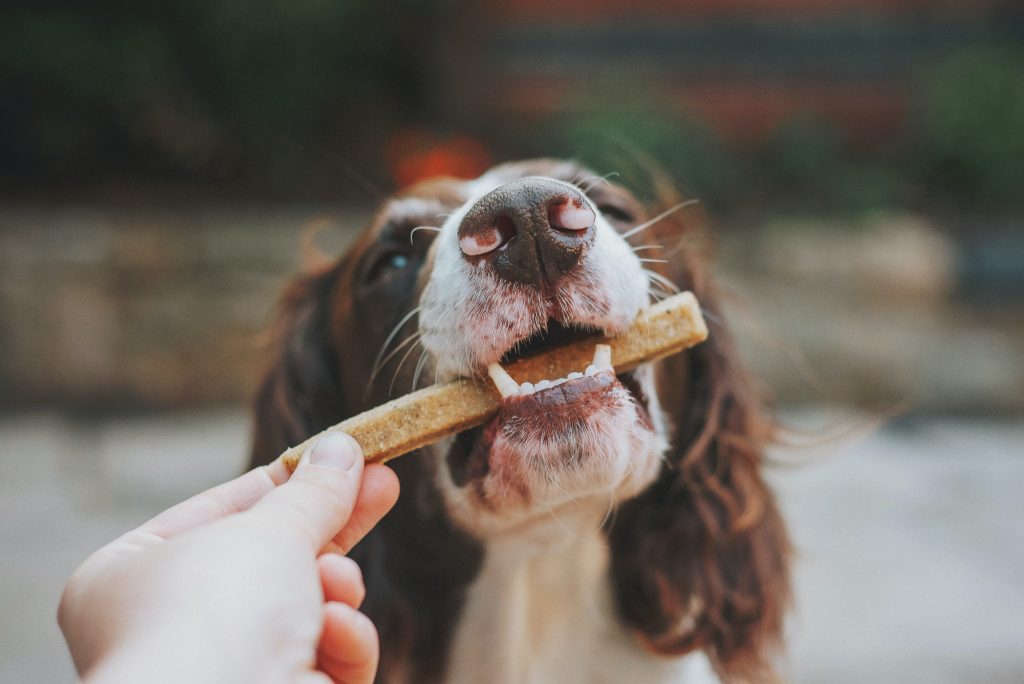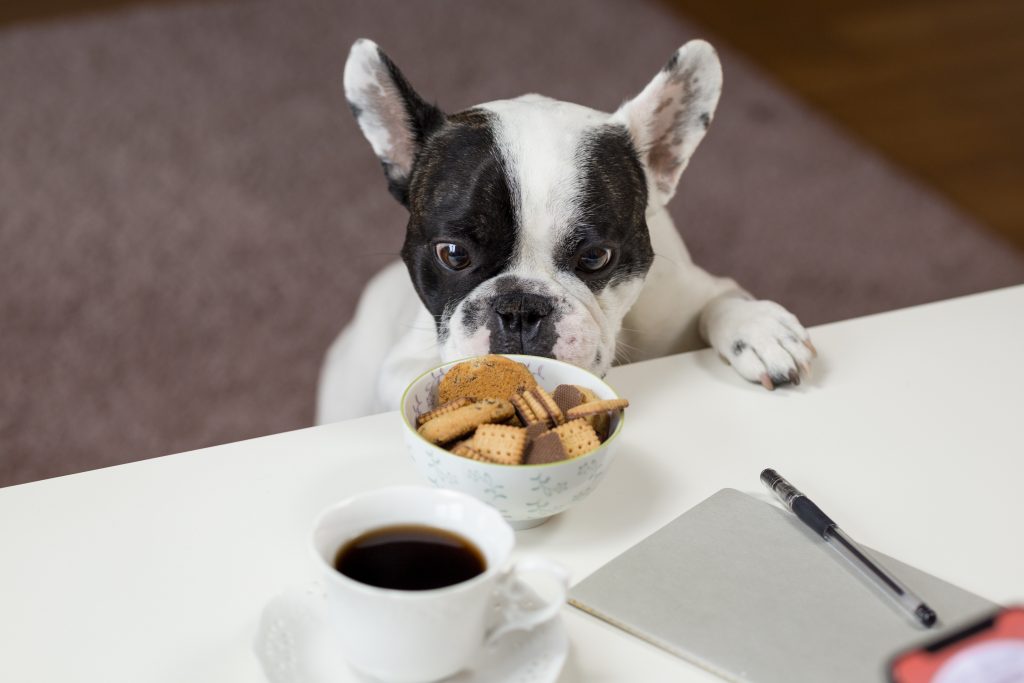Pet dogs and owners have a lot in common. Similar to eating habits, many dogs are easygoing and some are finicky, meaning they have a hard time choosing food. Fetch believes that any dog owner will be worried when the dog does not want to eat. Therefore, to recognize when anorexia is a sign of disease and what the owner should do in that case is quite helpful.

What is an “anorexic” dog?
“Anorexia” dogs just smell and lick the delicious, nutritious food or it’s time for the next meal and there are still leftovers from the previous meal.
Anxiety disorders
When dogs feel stressed they will have a reduced appetite. Just like us humans, dogs won’t eat as much when they’re stressed.
Emotions such as loneliness, boredom, fear of storms, fireworks, or anxiety about being abandoned (like staying at home while the owner is at work).
Bringing back bad memories
If you’ve ever eaten a food that made you feel guilty, chances are you’ll stay away from it for a while.
Your dog is also likely to act similarly when a certain food has made them obsessive.
They may want more attention from their owners than eating
Not all dogs are greedy for food, especially small breeds. For many dogs, food is not a big concern. They don’t think food is the best reward.
Dog age or health problems
If your dog has a sudden or gradual loss of appetite, especially as he gets older, schedule an appointment with your veterinarian to bring him in for a checkup.
You may need to change the food he likes
Maybe the reason is simply that the dog doesn’t like the taste of the food. Owners may consider exchanging for a different type of feed.
The owner feeds the baby too much reward cake
It’s fine to reward your dog for good behavior, but giving them too many treats can dampen their appetite when it comes to mealtime.
And if the owner continues to give the baby a reward cake to lure them to eat the main meal, it will cause them to misunderstand. They will save their stomach to eat the delicious dish instead of the main dish.

You feed them too much human food
You can generously let them eat the same dish as you, but this will do more harm than good.
Those snacks will accumulate and fill the dog’s stomach before mealtime.
Dogs should have a fixed mealtime
Like people, dogs can be creatures of habit. Free feeding will not help them to eat properly.

Solution for owners when they have an anorexic dog
First, the owner should review the health status and age of the dog
If your dog is at a healthy weight, but everything else doesn’t help him or her want to eat (especially if this is an older dog), seek the help of your veterinarian. Your doctor will perform some diagnostic tests. If the test results don’t identify the cause of your anorexia, your doctor may recommend that you do some tests to find the cause.
The second thing to keep in mind, recall if your dog has ever had a bad experience with the food, such as poisoning, vomiting or diarrhea. If your dog has had a tummy tuck on one food, a change to a different food may be effective.
Or you’ve just switched to a new food that your baby doesn’t like. This new type of food can upset your baby’s digestive system, making it stay away from food for much longer. If you feel you have to change foods, do so slowly, mixing a little into the old food and increasing it little by little.
Keep a record of how much treats and human food you feed your baby each day. Feeding too many treats and human food is a common reason a baby is not interested in main meals anymore.
Most dogs need 50 to 60 calories per kilogram of body weight to stay at a healthy weight. Other factors include weight, age, activity level, etc. Calculating how many calories your baby needs and how many treats will help you assess whether you have them snacking excessively.
You can reduce or stop giving your baby snacks for a few days and see if that improves anorexia.
You should also reduce sharing of food with them. It can be difficult to see how much of your food you share with your dog. You may think it’s just a tiny piece, but it’s actually too much for a small dog.
If you think an anxiety disorder is causing your dog to not want to eat, you can try spending more time with him. Signs that your dog is suffering from an anxiety disorder:
- Barking or howling when the owner is not at home.
- Rapid breathing and gasping (even when the weather is not hot)
- Trembling
- Run away and/or hide in the corner
- Do the digging action
- Escape from the garden
- Damaged furniture
- Injuring yourself, like excessive licking or chewing
Check to see if the dog has attention-seeking behavior. Many dogs will eat less when they can’t get the attention they want from their owners
It is normal for a dog to jump for joy when you meet them or feed them, or whine when you go, but the constant begging, begging, pushing, whining, barking, jumping. furniture or bringing toys to you as they mature are signs of attention-seeking behavior.
If owners don’t spend enough time physically, mentally, and socially with their dogs as they need, it can’t be helped that they develop this behavior.
If you are unable to help them improve this attention-seeking behavior, seek help from your veterinarian or an animal specialist.
Whether or not your dog has a serious cause of anorexia, it’s a good idea to fix their eating areas and meal times.
Choose for them a private permanent place to eat comfortably. Choose a place with only one entrance, like the bathroom, where they can naturally eat without worrying about being disturbed. A safe place where they can eat slowly can also help.
Practice feeding them at a fixed time frame. Teach your dog to understand that he will have no choice but to eat on time according to the following steps:
- Set the timer so that the food shows only 30 minutes. Whether your baby eats or not, put the food away when the time is up. Feed your baby at the same time every day, give him a fixed time to eat, maybe 15-20 minutes. If they don’t eat within your allotted time, take the food away and repeat the same thing next time. This act is to create a habit so that they understand that if they skip this meal, they can only get the next one within a few hours.
- When it’s time for the next meal, set the clock again and take the food away after 30 minutes, whether your baby eats or doesn’t.
- Over the next day or two, the dog will start looking for treats or begging for food. Maintain the above training method. Do not compromise! The dog is not starving. If it is hungry, it will eat. Many dog eaters love to snack. If this is the case with your dog, you can mix his favorite treats or treats in granules or canned food, or just mix with warm water. Many dog food companies have a special sauce for dogs that you mix into their food.

Summary
“Anorexia” dogs just smell and lick the delicious, nutritious food or it’s time for the next meal and there are still leftovers from the previous meal.
Causes of dog “anorexic”: anxiety disorders, recalling bad memories, they want to get the owner’s attention more than food, age or health problems, they don’t like the food , you feed them treats or human food too much or they need to be disciplined and eat on time.
There are several methods that can help improve your dog’s anorexia as follows: spend more time with them, try a new food, don’t force them to eat, change to a new food step by step, reduce the amount snacks, find a comfortable private place for them to eat, feed them on time. A last resort is to consult your veterinarian if you have tried the above methods and have not improved your dog’s anorexia.